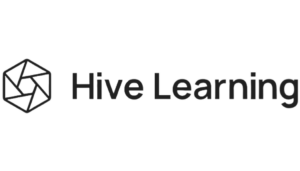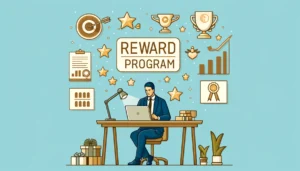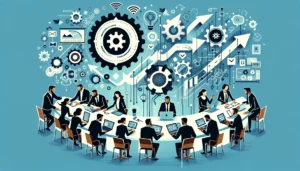HRD Roundtable Report: Delivering engaging employee experiences amid economic uncertainty
- 6 Min Read
The global economy is facing an uncertain outlook, and the high inflation levels worldwide are a testament to it. Companies and individuals are feeling the pinch due to sky-rocketing inflation rates, resulting in companies making tough decisions. Employees are concerned about their futures and need to see and feel a connection with their employer. On […]
- Event Types
- Date of Event: Jan 26, 2023


The global economy is facing an uncertain outlook, and the high inflation levels worldwide are a testament to it. Companies and individuals are feeling the pinch due to sky-rocketing inflation rates, resulting in companies making tough decisions. Employees are concerned about their futures and need to see and feel a connection with their employer.
On Thursday 26th January 2023, HRD Connect hosted a group of senior HR and people leaders to discuss this topic in a virtual roundtable that was led by Sidoney Samuels-Buckridge, Director, Employee Engagement, North America, AstraZeneca and sponsored by Workday Peakon. The group discussed how organizations must adopt an efficient active employee learning strategy to emerge victorious in this economic environment. The session was conducted under Chatham House rules so while this write-up will highlight key discussion points and takeaways, all participants are anonymized.
Communicating with employees
The roundtable began by highlighting the challenges that organizations face in keeping their employees engaged amid economic uncertainty. One participant shared that their challenge of communicating effectively with employees’ centers around creating messaging that balances both engagement and the right level of communication. Another participant talked about balancing the conversation between employee experience and culture, engaging leaders in the role, and maintaining company culture with a hybrid workforce. For another participant, the main difficulty they face is engaging production-level employees given the high turnover rate and busy schedules of the supervisors. An attendee from a financial services organization added to the discussion by mentioning the economic uncertainty and the complexity it adds, especially with a predominantly office-based workforce with a hybrid schedule.
Strategies to improve employee engagement and experience
The discussion then moved to center around organizational effectiveness, culture, and change management. One participant shared with the group their company’s employee experience framework “Moments that Matter”. This framework is centered around 9 moments in the employee lifecycle, including work, growth, and belonging, and provides tools and resources for both employees and leaders to answer questions about expectations and career development. One attendee chose to share her experiences in engaging employees during the pandemic. Despite budget constraints, her organization’s engagement score increased due to in-house training and recognition programs. The takeaway from this is that focusing on the employees’ day-to-day tasks and recognition of their talent and work can motivate and keep them engaged in the company.
Navigating inflation, wages, and rewards
As the discussion shifted to 2023, it was noted that the year is expected to be tough, and many companies will be facing performance discussions. The concern was to keep employees engaged and prevent them from quitting, especially if financial constraints prevent companies from giving raises or bonuses. One participant emphasized the importance of transparent and honest communication with employees about the economic climate and how recognition doesn’t have to be budget dependent. Overall, the discussion highlights the importance of employee engagement and the role that recognition and transparent communication play in keeping employees motivated and engaged.
During the discussion, the topic of inflationary pressures and employee feedback was raised. It was noted that despite inflation being over 8%, many employees have not received corresponding raises. To address this, the participant whose company utilizes the framework ‘Moments that Matter’ has developed an enterprise-wide listening strategy tied to their nine “moments that matter.” This includes asking employees about their opinions and preferences through surveys, focus groups, interviews, and a new pilot initiative called “alumni listening,” which focuses on employees who left the company but later returned.
The results of the alumni listening initiative showed that while fair wages are important, other factors that matter more to employees, such as flexibility. Some employees were willing to take a pay cut to return to the company because it offered flexible work arrangements, such as hybrid or remote options. This indicates that while the company may not necessarily be able to offer the highest salaries, the overall employee experience still makes it an attractive place to work.
One of the challenges facing supervisors is talking about inflation and cost of living, as the company goes against the cost of labor. The supervisors are not always well equipped to answer questions about these topics. To overcome this, the company needs to embrace the fact that supervisors may not always have all the answers and provide them with the tools and resources to effectively communicate.
Securing employee feedback
In terms of employee feedback, a question was raised about the methods used to gather information and the frequency of these surveys. It was noted that many companies conduct surveys only once or twice a year, which may not provide an accurate picture of employee needs and opinions. One participant mentioned that her previous company conducted surveys every quarter, but this resulted in a “natural dip” due to the constant re-surveying. Sidoney, the moderator, asked if anyone has had experience with tying employee performance to the results of a survey and whether this has led to better results. They observe that things that are measured tend to get done, and there seemed to be general agreement amongst the participants.
Fostering a culture of resilience
Sidoney then shifted the conversation towards resilience, given the current climate of uncertainty and change, and asked if anyone is doing anything to build a culture of resilience in their organization. One audience member shared their experience, explaining that they have built resilience into their culture by recognizing the human component of management. They focus on building collaboration, proximity, and transparency between employees and managers, which allows for open conversations and creates psychological safety. They have invested in leadership training programs, deployed flexible work environments, and are working towards a more collaborative, less hierarchical leadership approach. Another audience member shares that they have made investments in wellness and wellness materials and communications, but they feel they could do more in terms of removing roadblocks to help managers be more resilient and lead through uncertainty and change.
Tools to measure engagement
A participant shared how their company measures success. Their company uses an engagement survey conducted twice a year using a tool that measures employee engagement and includes a happiness score. They have a listening dashboard that is updated quarterly and includes data from multiple listening channels to see which areas are flashing red or green. The goal is to continuously improve and be aware of employee sentiment. Another person on the call says they are impact driven and want to see the impact of their work, but that the path can be long and winding. They believe HR needs to stay the course and empower employees with information and tools to be effective, and that this needs to be tied to the company’s strategy.
For more information visit: Workday Peakon








